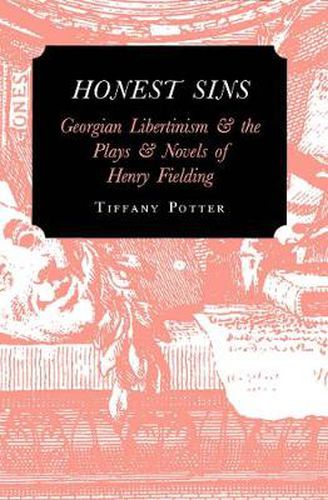Readings Newsletter
Become a Readings Member to make your shopping experience even easier.
Sign in or sign up for free!
You’re not far away from qualifying for FREE standard shipping within Australia
You’ve qualified for FREE standard shipping within Australia
The cart is loading…






Originally cruel, manipulative, and self-serving, during the 18th century the Restoration rake evolved into a more cheerful sinner: the good-natured libertine. While Tom Jones was Henry Fielding’s most complete embodiment of this new ideal, Tiffany Potter shows that the revised Georgian libertinism informs and illuminates all of his work. Potter is the first author to make clear how English libertinism changed during the eighteenth century as the violent, hypersexualized Hobbesian libertine, typified by the Earl of Rochester, was tempered by England’s cultures of sentiment and sensibility. The good-natured Georgian libertinism that emerged maintained the subversive social, religious, sexual, and philosophical tenets of the old libertinism, but misogynist brutality was replaced by freedom and autonomy for the individual, whether male or female. Libertinism encompasses issues of gender, sexuality, and literary and cultural history and thus provides a useful cultural context for a discussion of a number of critical approaches to Fielding’s work, including feminism, queer theory, new historicism, and cultural studies.
$9.00 standard shipping within Australia
FREE standard shipping within Australia for orders over $100.00
Express & International shipping calculated at checkout
Originally cruel, manipulative, and self-serving, during the 18th century the Restoration rake evolved into a more cheerful sinner: the good-natured libertine. While Tom Jones was Henry Fielding’s most complete embodiment of this new ideal, Tiffany Potter shows that the revised Georgian libertinism informs and illuminates all of his work. Potter is the first author to make clear how English libertinism changed during the eighteenth century as the violent, hypersexualized Hobbesian libertine, typified by the Earl of Rochester, was tempered by England’s cultures of sentiment and sensibility. The good-natured Georgian libertinism that emerged maintained the subversive social, religious, sexual, and philosophical tenets of the old libertinism, but misogynist brutality was replaced by freedom and autonomy for the individual, whether male or female. Libertinism encompasses issues of gender, sexuality, and literary and cultural history and thus provides a useful cultural context for a discussion of a number of critical approaches to Fielding’s work, including feminism, queer theory, new historicism, and cultural studies.